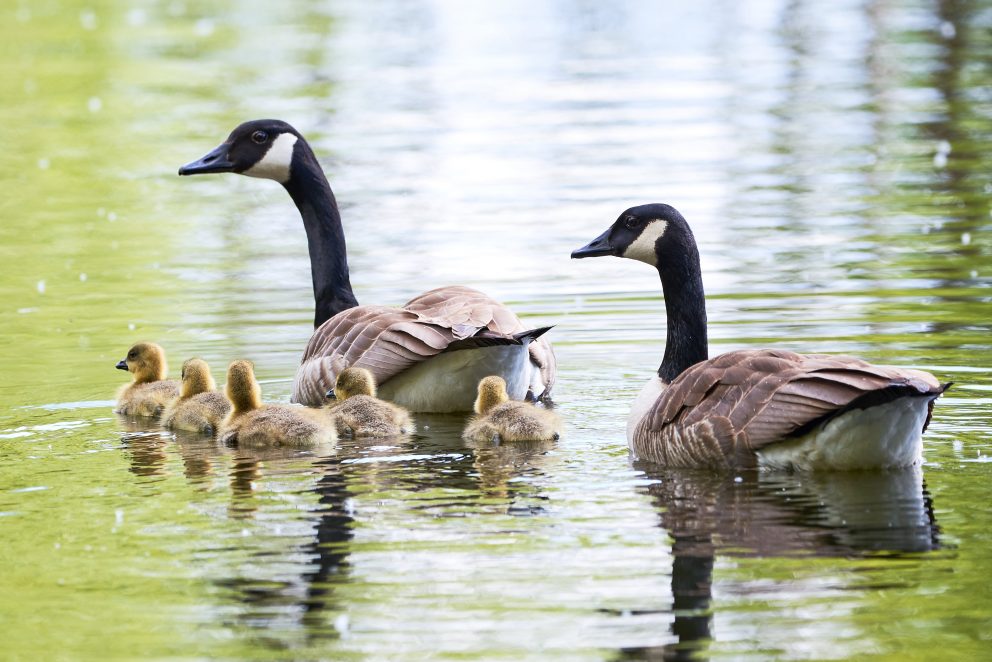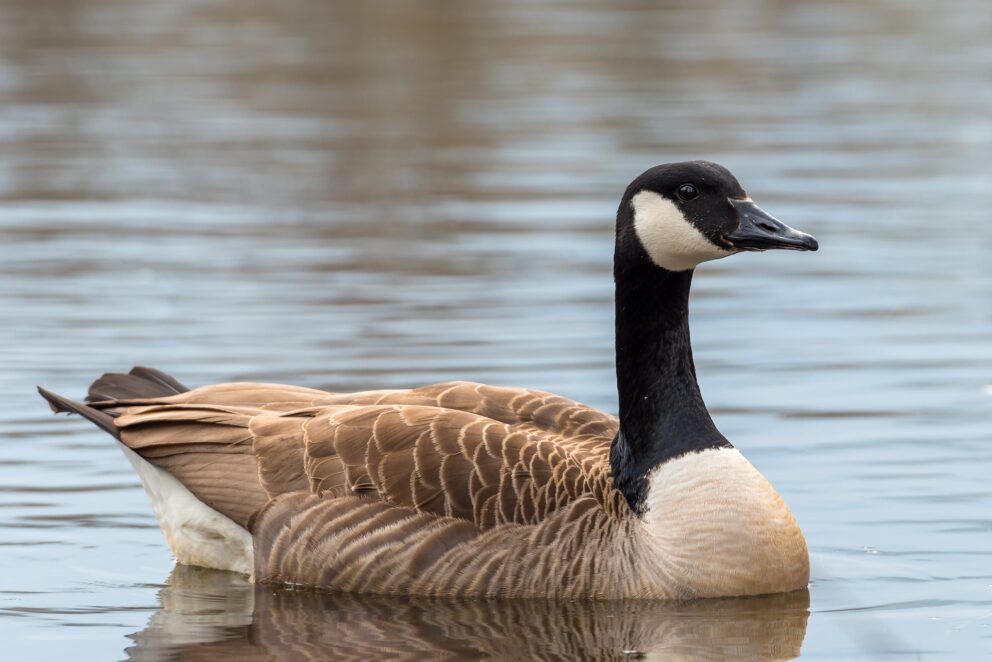- SCIENTIFIC NAME
- Branta canadensis
- CLASSIFICATION
- Bird
- LIFE SPAN
- 10-24 Years
- SIZE
- 30-43” | 5-14lbs
- STATE CONSERVATION STATUS
-
- State Protected
- FEDERAL CONSERVATION STATUS
- Least Concern
- GAME STATUS
- Game
- GAME TYPE
- Waterfowl
- Washoe
- Humboldt
- Pershing
- Churchill
- Mineral
- Lyon
- Douglas
- Carson City
- Storey
- Elko
- Lander
- Eureka
- White Pine
- Esmeralda
- Nye
- Lincoln
- Clark
- Agricultural Lands
- Developed Landscapes
Threats
- Disease
Natural History
Canada Geese primarily feed on vegetation such as algae, leaves, grass, seeds, and berries, but occasionally consume insects and small fish. Canada Geese form bonded pairs and will stay together for years. Females often have a preferred mating site that they return to each season. They lay two to ten eggs and incubate for approximately 30 days. Canada Geese in the northern United States migrate long distances south for winter, while geese already residing in the south and warmer regions migrate shorter distances, if at all. When migrating, they fly up to 40 mph and can travel up to 1,500 miles in a single day.
Fun Facts
Goslings are very impressionable and will follow nearly any animal that moves, including humans, mistaking it for their mother.














